He Who Would Be Emperor: In Pursuit of the Chrysanthemum Throne
Japan is well-known in the world for having the longest dynasty in history. The imperial house has been ruled by the same family since it's inception—which was over 2000 years ago if we include the legendary emperors, but was likely closer to around 1485 years ago when we only look at historic emperors, the first of which was Emperor Kinmei in 539. In either case, that's a long time for a single bloodline to control the throne!
There are many reasons why Japan didn't have a series of different dynasties like most other countries. The chief reason may be that the emperor has actually rarely had any power through much of that long span; power was usually held by another powerful family that found it more convenient to rule in the emperor's name rather than stepping out of the shadows and putting a target on themselves.
But that's not to say there haven't been challengers to the throne. Let's look at four of them today. The first openly declared his ambitions, the second showed his plans and laid a template that the shogunate would later follow, although only one of them went as far as he did, the other two are more speculative in that they didn't declare anything or show their hand as much as the second on this list but they also showed their abilities and desire to push their station, so I will leave you to decide for yourself what their true motives were.
Let's begin!
Taira no Masakado: The Rebel Emperor Who Challenged Eternity
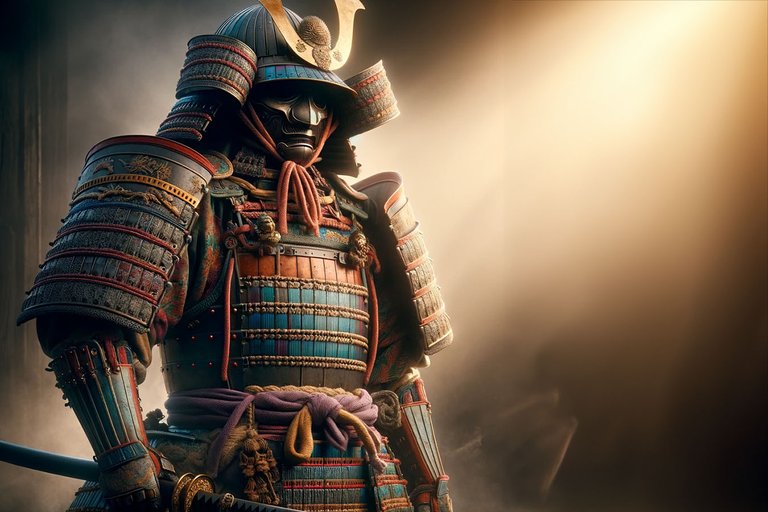
Generated by Playground AI
In the tapestry of Japan's imperial history, no rebellion stands higher than that of Taira no Masakado. In 939 AD, amidst the political tumult of the Heian period, Masakado did the unthinkable: he declared himself the new emperor (新王), challenging the very foundation of Japan's imperial dynasty which had ruled for centuries by that point.
His rebellion was short-lived, culminating in his death in 940 AD, but Masakado's audacity left an indelible mark on history, embodying the ultimate challenge to the imperial authority. His actions have been immortalized not just in historical texts but in the collective memory of Japan. To this day, Masakado is venerated and feared as a potent spirit, a reminder of the consequences of challenging the divine order.
Some say that 1000 years later he still carries out his rebellion. To pacify his angry spirit, the government takes meticulous care of his grave in Tokyo, even though the space dedicated to Masakado is in an very highly-priced area of Tokyo, nestled between office buildings.
Taira no Kiyomori: The Warrior Who Attempted to Takeover of the Imperial Family
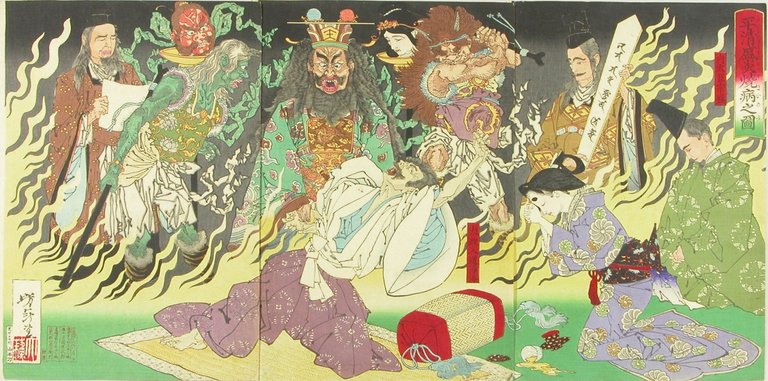
As he lay dying, his fever burned with the heat of hell. "The Fever of Kiyomori" by Tsukioka Yoshitoshi
Taira no Kiyomori stands as a colossal figure in the annals of Japanese history, not just for his military exploits but for his unprecedented influence over the imperial court. Rising to prominence in the late 12th century, Kiyomori achieved what many warriors before him could only dream of: he wielded the power of a de facto ruler over Japan, intertwining the fate of the Taira clan with that of the imperial family itself. This goes beyond the normal shadow ruler than has been the norm in Japanese history; Kiyomori started a hostile takeover of the imperial family itself.
Although he did not try to take the Chrysanthemum Throne itself, which might rule him out from this article, he did put position his family to inherit it: his ascent to power culminated in the strategic placement of his grandson on the imperial throne, a move that symbolized the zenith of his ambition. This was a tremendous challenge, amounting to creating an entirely new dynasty by hijacking the old.
However, Kiyomori's ambition also set the stage for his downfall and the eventual decline of the Taira clan. His aggressive consolidation of power and the alienation of rival clans ignited the Genpei War, a conflict that would ultimately lead to the Taira's defeat and the rise of the Minamoto clan. Despite this, Kiyomori's legacy is a testament to the transformative impact one individual can have on the course of history, blurring the lines between royalty and the warrior class, and reshaping the political landscape of Japan.
Ashikaga Yoshimitsu: The Shogun Who Dreamed of Empire
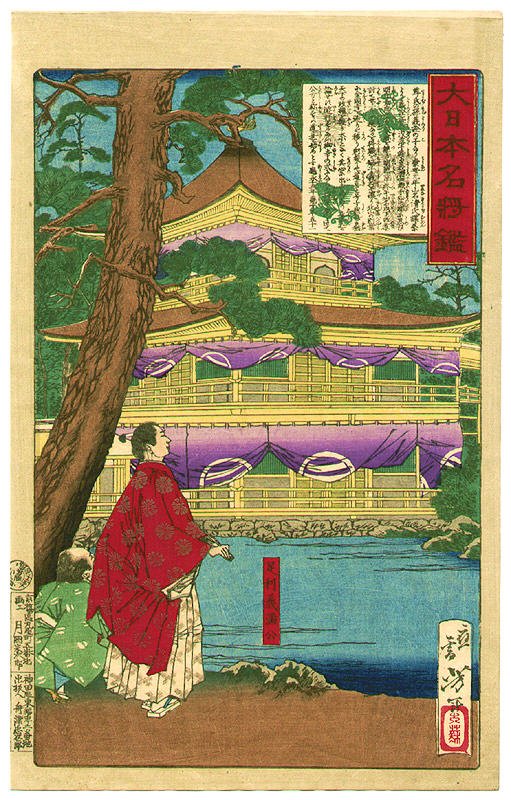
Yoshimitsu looking on Kinkakuji by Tsukioka Yoshitoshi
Jumping to the 14th century. Yoshimitsu's tenure as the third Ashikaga Shogun marked a pivotal era in Japanese history. After he succeeded in reuniting the Northern and Southern courts, ending three decades of division and infighting in the imperial family, he became the most powerful man in Japanese history up to that point. When the Ming Chinese emperor wrote him and bestowed him the title of King of Japan, he did not refuse or dispute the title, in fact he readily accepted it.
This title, bestowed with the Ming emperor's recognition, was a double-edged sword: it granted Yoshimitsu international legitimacy while simultaneously challenging the domestic symbolic supremacy of the Japanese emperor, a challenge that would see later generations branding him a traitor as they defaced statues of him.
His efforts to beautify Kyoto and his construction of the Golden Pavilion are testament to his desire to establish a courtly culture that could rival the imperial court in splendor and influence. Many scholar believe that he was planning on assuming the title of emperor himself, however he never got the change: he died shortly after under mysterious circumstances, leading some historians to speculate that he was assassinated.
Oda Nobunaga: The Unifier with Imperial Aspirations
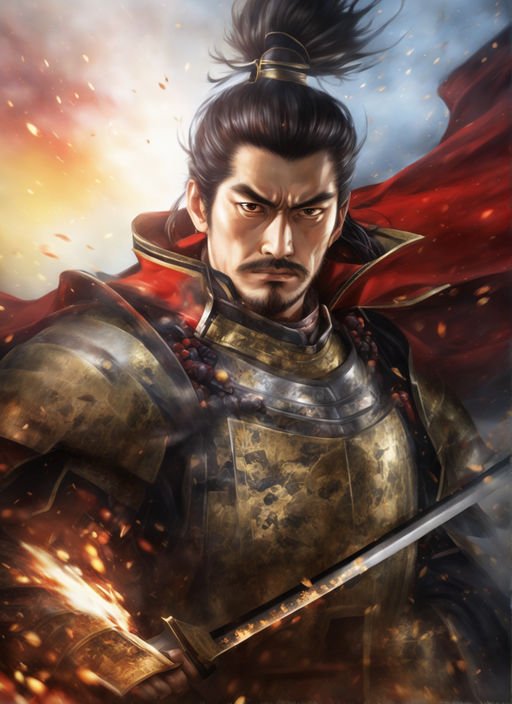
Generated by Playground AI
Finally, we come to Oda Nobunaga, the warlord who nearly unified Japan in the late 16th century, similarly straddled the realms of ambition and overreach. Of all these four men, Nobunaga is likely to be the one you have heard of before. His bloodthirsty ruthlessness is legendary; as is his ambition.
Like Yoshimitsu, a foreigner power recognized and considered him the king of Japan—the Jesuits in Nobunaga's case—and he did nothing to correct this, allowing the world to view him as the de facto ruler of the country. He was constantly deflecting court titles. No matter what title the emperor tried to bestow on him, he refused. His refusal to accept titles from the imperial court was not just an act of defiance; it was a declaration of his unparalleled authority. His vision for a unified Japan under his rule hinted at an unspoken desire to establish a new order, with himself at its zenith, perhaps even as a new emperor.
Nobunaga's ambition was not limited to unifying Japan under his rule or even ascending to the Chrysanthemum Throne; he sought to transform the very fabric of Japanese society. His policies promoted trade, encouraged innovation, and sought to break the stranglehold of the warrior nobility over the peasantry. This vision for Japan, however radical, was cut short by his assassination by one of his generals who sought to take power for himself.
Interestingly enough, Nobunaga traced his family back to the Taira clan. That makes three of the four on this list of that family.
There you have it: four men who had imperial ambitions. Much more can be said on all four men, so maybe I'll write more in the future.
❦
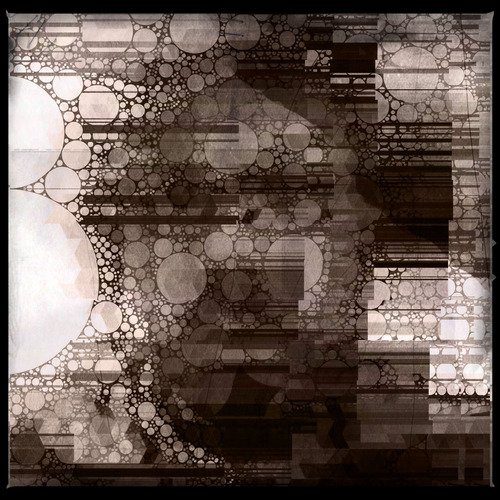 |
David LaSpina is an American photographer and translator lost in Japan, trying to capture the beauty of this country one photo at a time and searching for the perfect haiku. He blogs here and at laspina.org. Write him on Twitter or Mastodon. |
I think Japanese history is so interesting. I’ve read a bunch but no where near enough. Thanks for the info
It is, I agree. Fun to read and learn about. Glad you enjoyed the post!
I wish we had past leaders that were so much larger than life like these other places. I meant I'm not saying I want to have a dictator and I also think we had some food leaders, but nothing like this.
Well... all these guys were warlords, so they weren't exactly nice. There is a reason for that ukiyo-e print above that shows Kiyomori burning with the fires of hell, after all. He was ruthless, killing at a whim, and everyone hated him. Then we had Nobunaga who just killed pretty much everyone. Women, children, old people. Warlords be warlords. They make for exciting tales a few hundred years afterwards, but I don't think the tales were quite as exciting for the poor folks who were living in their way at the time.
Okay, you got me there.
Thanks for the history lesson. So I did Taira no KiyomorI eventually manage to install his grandson as emperor?
Yep. Emperor Antoku. But the Taira lost the war, and Antoku leap to his death in the waters at Dan-no-Ura with his grandmother.
And he didn’t have any kids to succeed his lineage, did he?
Nope. He was only 8 or 9. He didn't really know what was going on. Who knows what was actually going on, but the tradition is that his grandmother encouraged him to leap to his death in the waters by telling him they were visiting the dragon king and that he would treat them well.